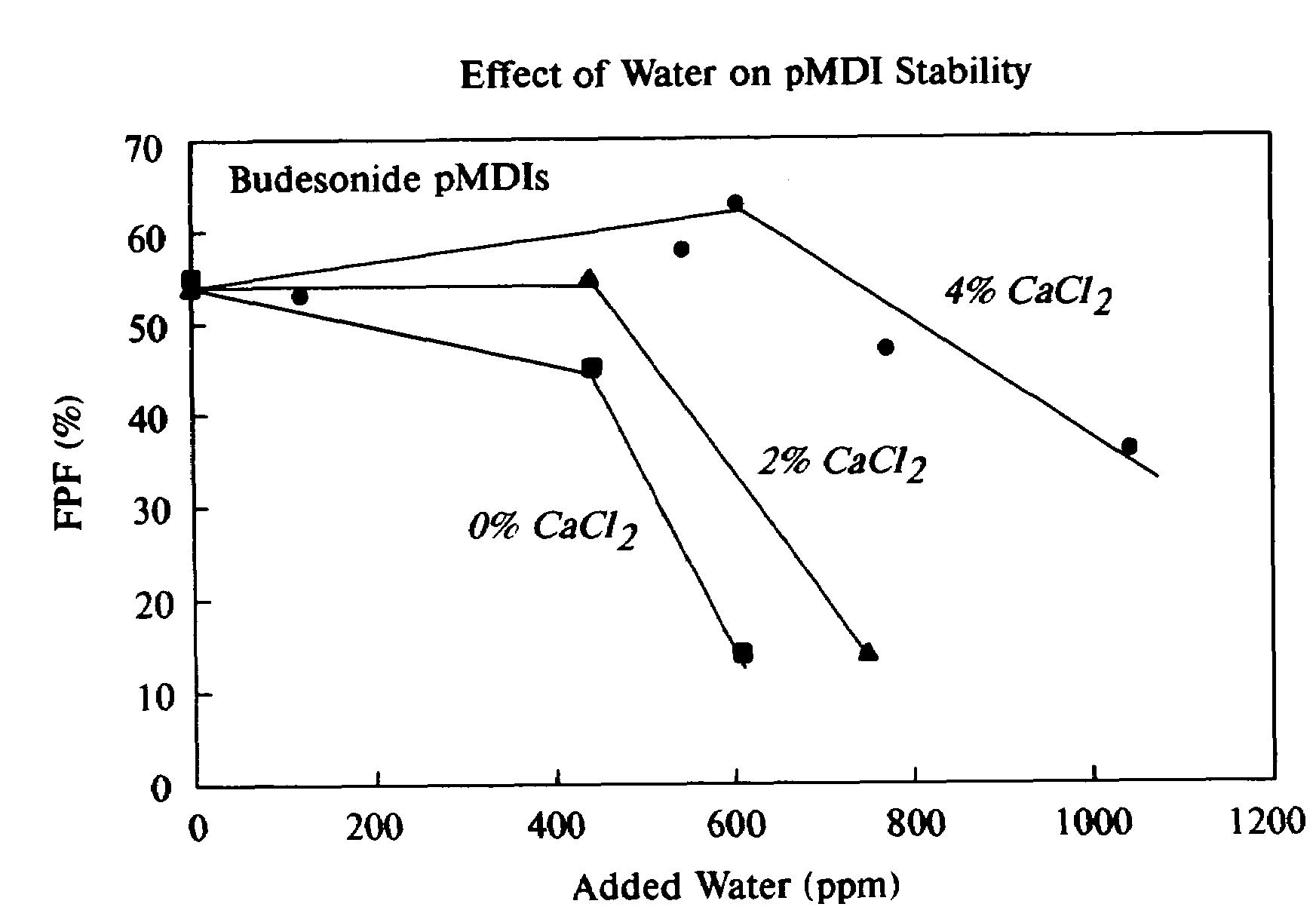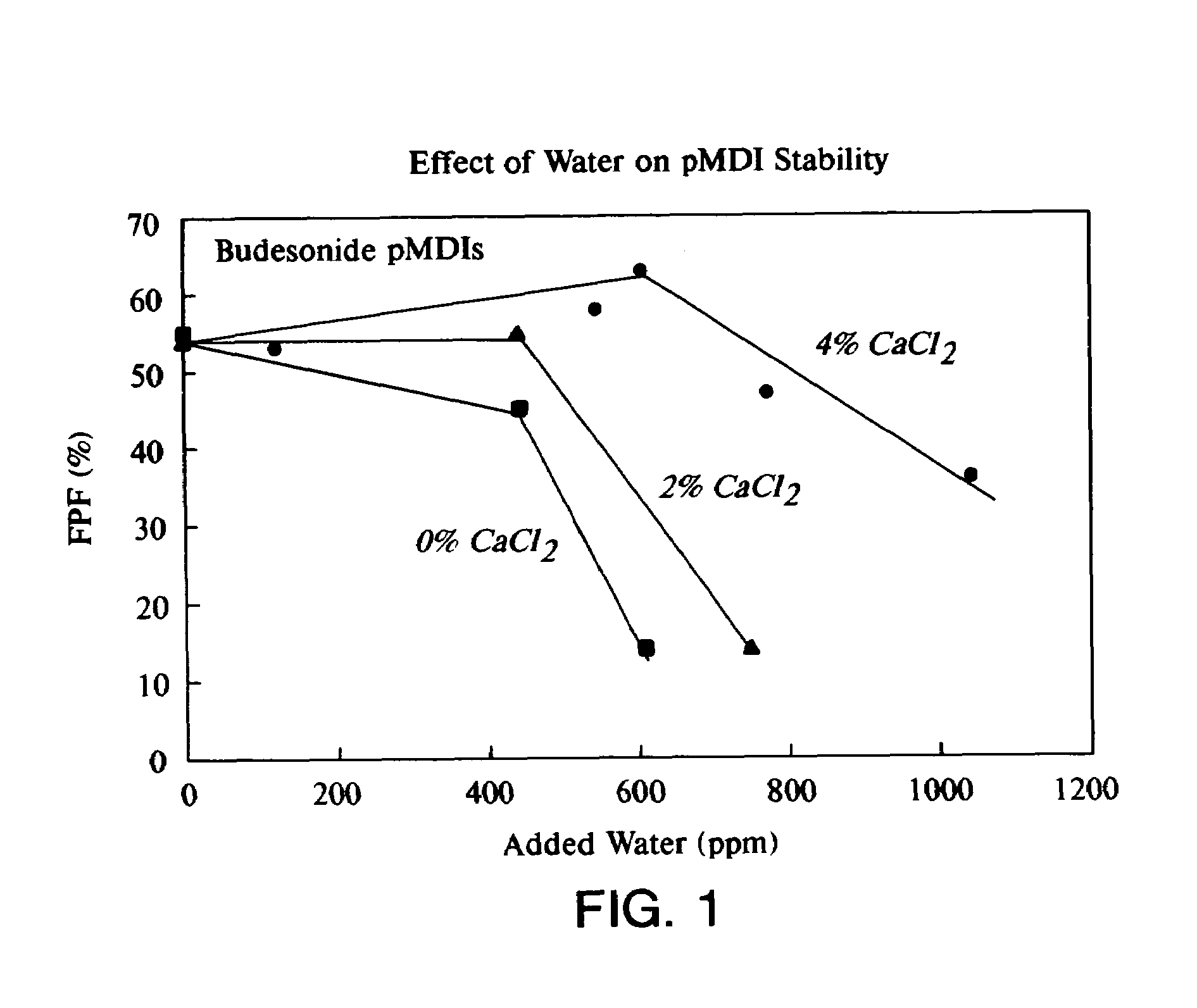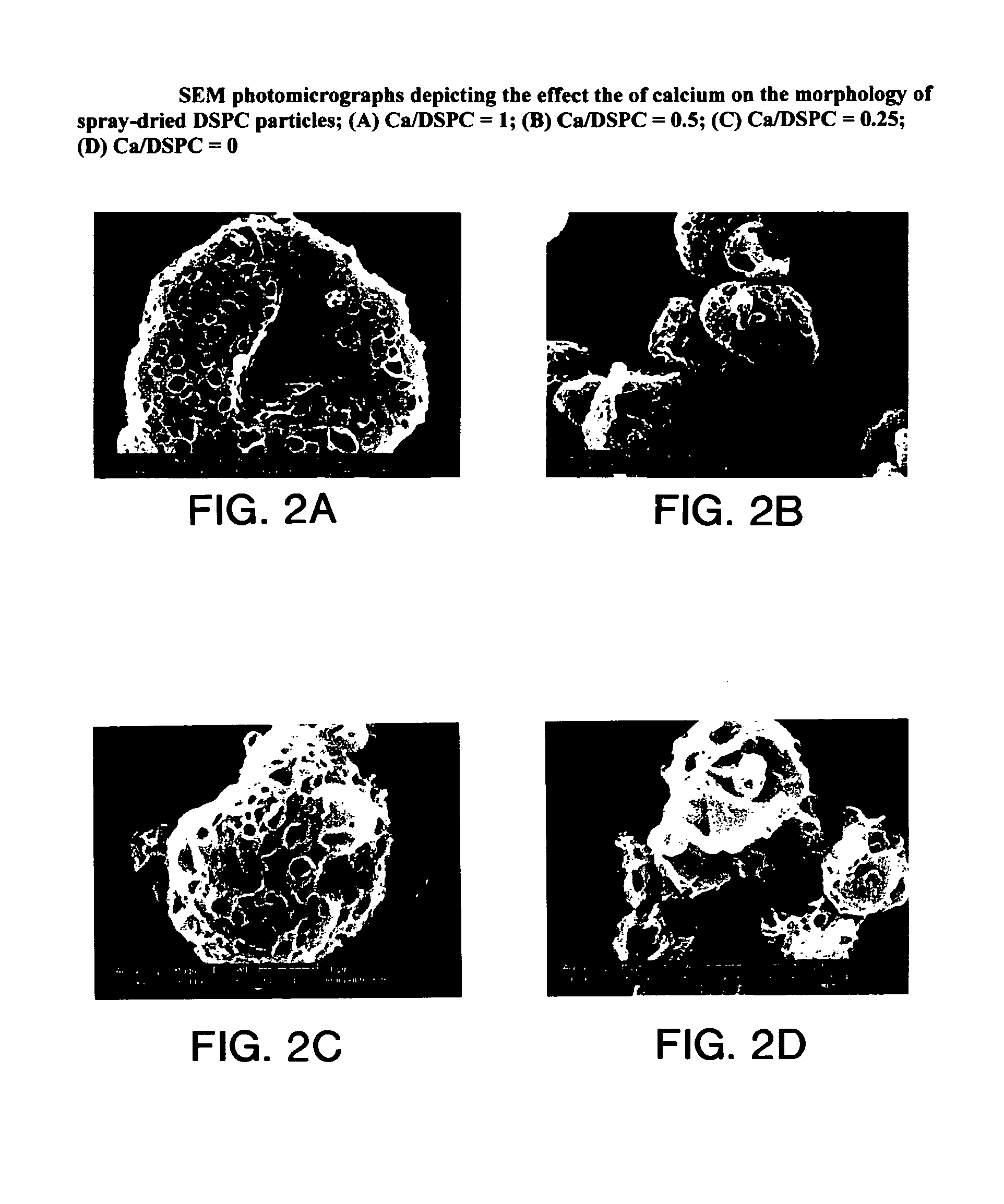Phospholipid-based powders for drug delivery
a technology of phospholipids and powders, applied in the field of phospholipid-containing particulate compositions, can solve the problems of ineffective nebulizers, drug loss, and ineffective treatment of adult respiratory distress syndrome, and achieve stable dispersibility over time, improve inlet and outlet temperature, and excellent spreading characteristics
- Summary
- Abstract
- Description
- Claims
- Application Information
AI Technical Summary
Benefits of technology
Problems solved by technology
Method used
Image
Examples
example i
Effect of Added Calcium Ions on the Tm of Spray-Dried Phospholipids
[0073]The effect of calcium ions on the gel-to-liquid crystal transition temperature (Tm) of spray-dried phospholipids was investigated. The resulting powders were examined visually for powder flow characteristics, characterized for Tm using a differential scanning calorimeter (DSC).
[0074]Dry lung surfactant particles comprising long-chain saturated phosphatidylcholines, PCs (e.g., dipalmitoylphosphatidylcholine, DPPC or distearoylphosphatidylcholine, DSPC) and varying amounts of calcium chloride were manufactured by an emulsion-based spray-drying process. Calcium levels were adjusted as mole ratio equivalents relative to the PC present, with Ca / PC (mol / mol)=0 to 1. Accordingly, 1 g of saturated phosphatidylcholine (Genzyme Corp, Cambridge, Mass.) and 0 to 0.18 g of calcium chloride dihydrate (Fisher Scientific Corp., Pittsburgh, Pa.) were dispersed in approximately 40 mL of hot deionized water (T=60-70° C.) using an...
example ii
Effect of Added Magnesium Ions on Tm of Spray-Dried Phospholipids
[0082]Phospholipid particles stabilized with magnesium ions were prepared by an emulsion-based spray-drying technique. The emulsion feedstock was prepared according to the procedure described below. In the first step, 0.45 g of distearoylphosphatidylcholine, DSPC, and 0.126 g magnesium chloride hexahydrate (Fisher Scientific, Pittsburgh, Pa.) were dispersed in 41 g of hot deionized water (T=60 to 70° C.) using an Ultra-Turrax mixer (model T-25) at 10,000 rpm for 2 min. 17 g of perfluorooctyl ethane was then added drop wise at a rate of approximately 1-2 ml / min during mixing. After the fluorocarbon addition was complete, the emulsion was mixed for an additional period of not less than 4 minutes. The resulting coarse emulsion was then processed through a high pressure homogenizer (Avestin, Ottawa, Canada) at 18,000 psi for 5 passes, to yield a submicron fluorocarbon-in-water emulsion stabilized by a monolayer of DSPC. Th...
example iii
Preparation of Spray-Dried Lung Surfactant (ExoSurf®) Particles
[0084]Dry lung surfactant particles having the same components as ExoSurf® (Glaxo-Wellcome, Research Triangle Park, N.C.) were manufactured using a spray-drying process. To achieve this end, the osmotic NaCl component of Exosurf was replaced in one formulation by CaCl2. Accordingly, 1.55 g of dipalmitoylphosphatidylcholine and 0.144 g of calcium chloride dihydrate or sodium chloride were dispersed in 50 mL of hot deionized water (T=60-70° C.) using an Ultra-Turrax T-25 mixer at 8,000-10,000 rpm for 2 min. 18.5 g of perfluorooctyl ethane was then added dropwise during mixing at a rate of 2-5 ml / min. After the addition was complete, the emulsion was mixed for an additional period of not less than 4 minutes at 10,000-12,000 rpm. The resulting coarse emulsion was then homogenized under high pressure with an Avestin C-5 homogenizer (Ottawa, Canada) at 8,000-10,000 psi for 4 passes, and at 18,000-20,000 psi for a final pass. I...
PUM
| Property | Measurement | Unit |
|---|---|---|
| temperature | aaaaa | aaaaa |
| molar ratio | aaaaa | aaaaa |
| temperature | aaaaa | aaaaa |
Abstract
Description
Claims
Application Information
 Login to View More
Login to View More - R&D
- Intellectual Property
- Life Sciences
- Materials
- Tech Scout
- Unparalleled Data Quality
- Higher Quality Content
- 60% Fewer Hallucinations
Browse by: Latest US Patents, China's latest patents, Technical Efficacy Thesaurus, Application Domain, Technology Topic, Popular Technical Reports.
© 2025 PatSnap. All rights reserved.Legal|Privacy policy|Modern Slavery Act Transparency Statement|Sitemap|About US| Contact US: help@patsnap.com



